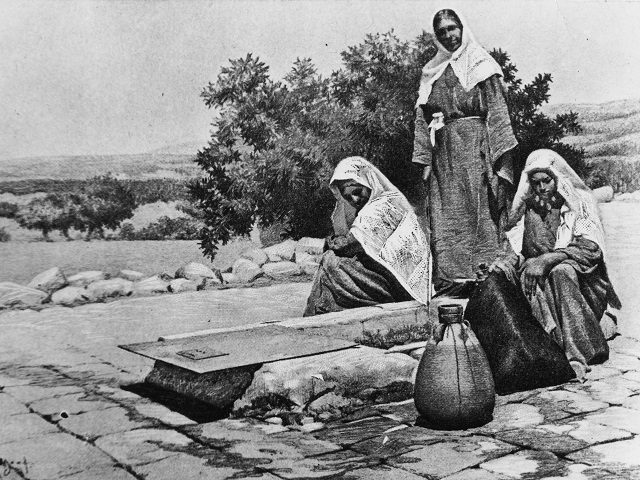Nicholas Blincoe writes that “makeovers” to the city of Bethlehem, the apparent site of Jesus’s birth, “were almost all the work of women.”
From The Daily Beast:
The old city of Bethlehem sits on a high thin ridge at the edge of the desert, facing the Church of the Nativity. However, the original “little town” of the Gospels once stood on the hilltop now occupied by the church and its monasteries. In effect, as the church expanded, the town was pushed on to the ridge opposite. The entire built environment of Bethlehem has been shaped by the growth of the church: and one of the more remarkable, if forgotten facts is that almost all those responsible were women.
Bethlehem was a popular place of pilgrimage by the second century, but it was only when the Romans began to embrace Christianity that the fabric of the city changed. Many Roman women had amassed fortunes as heiresses, divorcees, widows, and even investors and entrepreneurs. However, this was wealth without power. As the excellent new book by classical historian Mary Beard, Women and Power, points out, political life in Rome was based around the principle that women had to be excluded from exercising their voices. The great attraction of Christianity was that it offered women a new platform, and throughout the fourth century, the spread of the faith was shaped and driven by women.
Helena, the bar maid who rose to become empress, is the most celebrated of the early church mothers, but there were many others. The imposing and beautiful Marcella, for instance, handpicked bishops and edited church liturgy from the salon that she ran in her austere yet, somehow, still opulent city-center palace. The indomitable Poimenia sailed to Egypt at the head of a private fleet accompanied by numerous bishops and personal confessors, from whence she continued a pilgrimage to Bethlehem and Jerusalem.
Christianity had placed a female figure at its heart, and the cult of Mary certainly played its part in attracting these women. But far more important was the triumph over biology and the flesh so eloquently dramatized by Christ’s struggle against temptation in the desert. The celebration of piety allowed women to reject the idea that they had to re-marry after divorce or widowhood, and acquire a husband in order to exercise their will. Helena had been cast aside when her husband made a political second marriage. At almost 80 years of age, when her son Constantine became emperor, she seized power and used it in a very personal way. As her son’s emissary to the Eastern Empire, she built churches and spread wealth in a kind of New Deal program that kick-started an economy that had been moribund for a century. In Bethlehem, the church she commissioned was so unusual, following a design so unprecedented, we should take it as Helena’s own personal statement.
Read the rest of the story here.

COMMENTS
Please let us know if you're having issues with commenting.